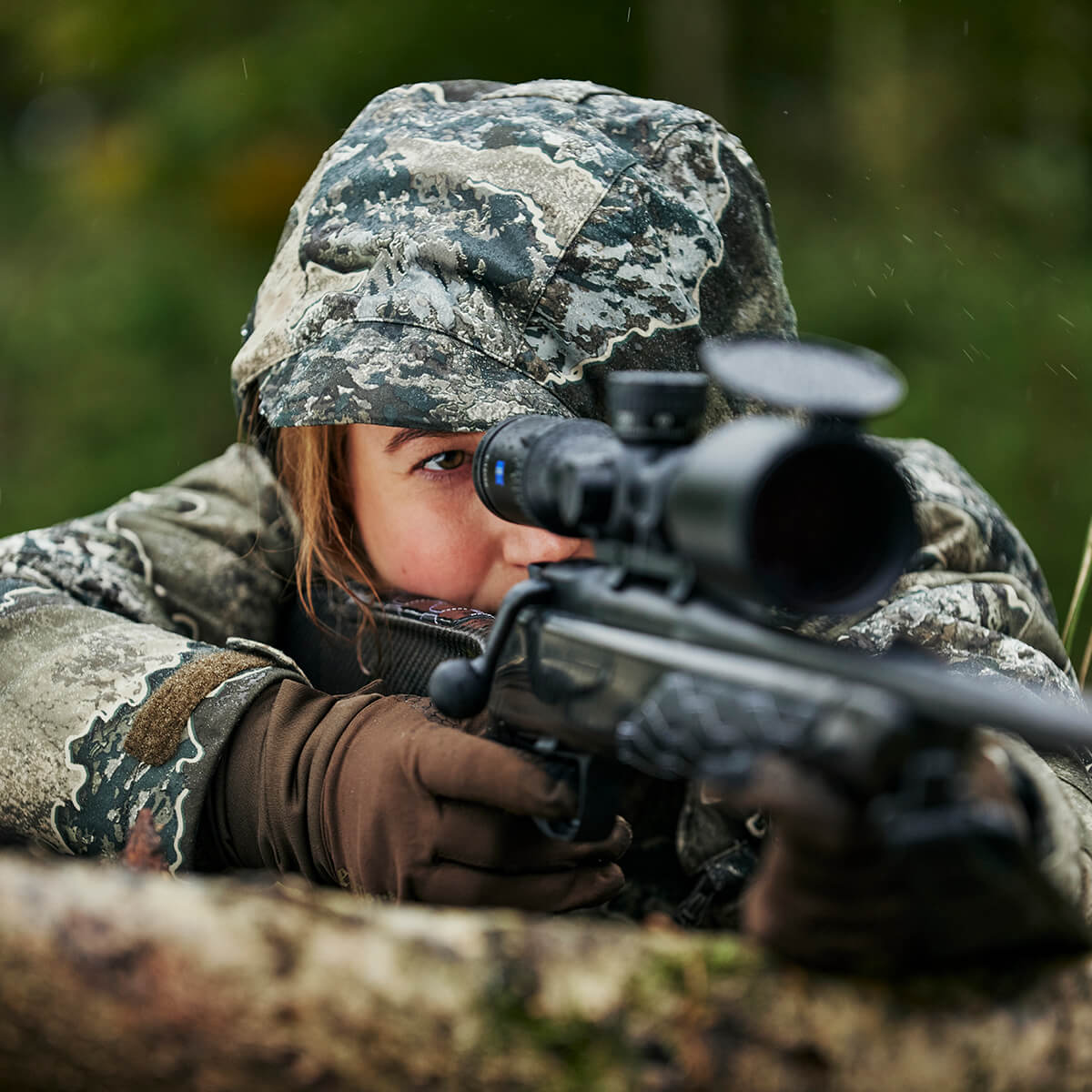
Disclaimer
This article may contain rules that do not apply to your country. Please check which rules applies to your country.
10 Tips To Improve Your Long Range Shooting
Long range shooting is a skill that can’t be mastered in one day; there are many factors that need to be considered when aiming at a target from a distance. It takes time and patience before you are ready to squeeze the trigger.

Get into a comfortable position and relax.
Make sure your rifle is pointing naturally at the target, and that the crosshairs are in the right place. If you need to realign the rifle, do this by moving your whole body starting with the legs, rather than just twisting your torso. You may also need to lift and replace the rifle/bipod.

ENSURE YOUR POSITION IS SOLID ENOUGH TO KEEP THE RIFLE COMPLETELY STEADY.
Most long range shooting is conducted prone. Your body must be well grounded, with both elbows down and your forearms also on the ground. The weak hand should support the rifle butt in the shoulder and be grounded, with the aid of a back bag if necessary.

Your view through the scope must be perfect.
When looking through your scope don't take the shot unless the view is 100% clear, any shadow or tunnel effect will induce parallax error and throw the shot off. Be certain the front (objective) lens and the rear (ocular) lens are in perfect alignment with the rear lens just exceeding the diameter of the front lens. This process of “lining up the circles” is just as important with a telescopic sight as it is with aperture sights on target rifles.

The shot release and follow through must be made without undue movement.
The trigger should be squeezed with the centre of the pad of your index finger and your fingernail parallel to the trigger guard, so the motion is straight back. Squeeze the trigger whilst maintaining a fixed gaze through the scope. If you blink or flinch when squeezing the trigger it could have a major impact on hitting the target. Commit to memory where your crosshairs are when the shot breaks. You then need to refocus on the moment the bullet hits the target or lands nearby. Both sets of information are vital to the placement of your next shot.

Find your Deerhunter clothing here
BUY NOWTip 5: Hold the rifle firmly, but not in a death grip, in order to control recoil.
When looking through the sight your cheek should firmly engage the stock with the head held reasonably upright and not an angle. Good ‘cheek weld’ is vital. Keep a firm hold of the pistol grip with your thumb curled around it for safety. Leaving your thumb behind the bolt or alongside the safety catch can a painful habit if you progress to large calibre rifles with heavy recoil.
Tip 6: Practice at short range: then only when you’re really good, think about shooting further.
Many people start to shoot at long range when their short-range skills are still questionable. Adding basic errors to your attempts to work out issues around elevation and windage is not a recipe for success. The ability to shoot consistently at short range is the first element of long-range success.

Study the effect of wind and gravity on bullets.
Once Points 1-6 have been fully addressed shooting at long range becomes about measuring the actual distance from rifle to target, calculating wind speed and direction and having proven ballistic data to work with. Now is the time to invest in a wind metre, a laser range finder and an appropriate ballistic solution for your rifle.

Remember that knowing the wind speed and direction at the firing point may not be enough.
Topography, trees, mirage, multiple wind values en route to the target and updrafts and downdrafts can all affect bullet flight. Only experience and many rounds fired, and spotted, can provide the skills necessary to hit the target these tough conditions.
Tip 9: The fact you once made a certain shot on a particular day at range X means nothing.
Don’t be an armchair hero who talks endlessly about a lucky shot as if it can be repeated to order. Being able to make the shot first time is what actually counts. For most rifle shots this means shooting at live game within a few hundred yards or less if the conditions are complex.
Tip 10: Finally, don’t confuse long range shooting with real hunting.
If your target has a pulse, show respect and get close enough to make the first shot with 100% certainty. Make sure you have enough skill (and ammo) in reserve to finish the job if/when it goes wrong.
GET MORE HUNTING TIPS


















